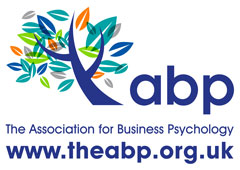In recent days, the IMF (International Monetary Fund) director Christine Lagarde stressed that some countries could increase their economies by 35% by increasing women’s participation in the labor force. In fact, many among them are the fact that the country’s long Lagarde stressed that Turkey has been aware of, and conducting studies on this subject.
Women’s participation rate in the labor force in Turkey reached 34.1% in 2018 with the support of the state, private sector,and the civil society. Although the target is 41% in 2023, this ratio is 50% in the working life, and it is critical for both equality of opportunity and economic indicators.
Even after years of projections, ensuring full equality seems to be a difficult goal to achieve. There are many reasons for this. The most important of these are hidden in our cultural codes. The patriarchal form of organization, which has become a peak with the transition to industrial society and has become apparent with the transition of humanity to the agricultural society, has penetrated deep into our daily lives. This problem is reflected in the top level of business life, which is the first area where competition in daily life manifests itself. This is the first field of competition in daily life, business life, this problem is reflected in the highest level. The disadvantageous situation of women in recruitment and promotion of human resources processes has been the subject of hundreds of studies.
However, it is clear that this unfair approach does not have a concrete, data-based basis.
In the last decade hundreds of thousands of data we have acquired as Psylabs Turkey from human resources the tools we use in the evaluation process in the market, shows us that no exhibit low performance in women than men. Usually, the difference is not statistically significant. Even in some projects, we see that women are one step ahead of men.
So, where do we start as HR professionals and how can we put the first sea star into the sea?
Of course, roll up the sleeves from the hiring phase! In order to achieve this goal, it is very important to ensure that both women and men are given equal opportunities, especially in recruitment processes.
Firstly, a recruitment model which has the potential to prevent fair and equal evaluation between female and male candidates and to completely eliminate personal biases should be established. In order to ensure that we need to purify our recruitment process from any individual, arbitrary and subjective impact and instead rely on scientific and objective tools.
Of course, using only these tools is not enough. It is critical to use internationally approved tests and inventories approved by international institutions that are really well prepared, both culturally, regionally and sexually.
The most critical step in this process is to eliminate the risk of measuring against women by all the assessment tools used in the selection-placement process, along with general ability tests and personality inventories.
But how can you be sure that the tests you use will provide equal opportunity for your female candidates?
- First, before selecting the tests you will use, carefully examine whom the scientists are developing these tests and their experiences in their fields.
- Ask your test provider for scientific and statistical evidence that the tests are reliable and valid as well as do not discriminate according to sex.
- Assess your candidates with as many tools as possible in your selection process.
- Compare the results of the evaluation of all male and female candidates after completing your projects. Remember, big differences indicate incorrect measurements.
A well-designed selection process and the use of the right psychometric tools allow you to give equal opportunities to both female and male candidates during the recruitment process. So you can be sure that you choose the right candidates for your organization without considering gender differences.
Keep in mind;
In the selection of candidates, equality of opportunity both contribute to women’s participation in business life and strengthening it, as well as reaching your organization’s business goals!
Happy 8 March, International Women’s Day!
References
https://www.theguardian.com/world/2019/mar/01/more-women-in-the-workplace-could-boost-economy-by-35-says-christine-lagarde
http://www.hurriyet.com.tr/ekonomi/bakan-selcuktan-kadin-istihdami-hakkinda-aciklama-41141339
https://onlinelibrary.wiley.com/doi/pdf/10.1002/9781118133880.hop210004



